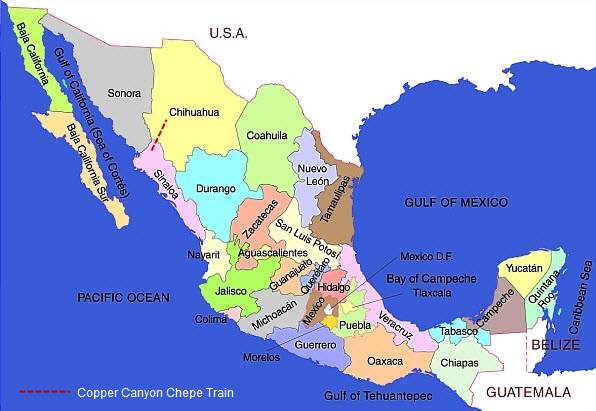Mexico Information
Brief History of Mexico
The history of Mexico begins perhaps as much as 30,000 years ago. Sometime during the last ice age nomadic tribes of hunter-gatherers from Asia first crossed the Bering Strait and entered the Western Hemisphere. (There is is now an alternative theory that peoples also landed in the South Americas from both Africa and the Pacific Islands and gradually moved north into the North American continent). Following the seasonal supply of wild grains and game, they eventually migrated into the region separating North and South America dubbed by archaeologists as Mesoamerica. With its diverse geography and extraordinary natural abundance, this land gave rise to the development of early civilizations unique in the world.
Pre-Hispanic Mexico
The earliest phase of Mexico’s colorful history is generally broken down into four periods:
ARCHAIC, up to 1500 BC
PRE-CLASSIC or FORMATIVE, 1500 BC-300 AD
CLASSIC, 300-900 AD
POST-CLASSIC, 900-1521 AD
The first traces of human life found in Mexico date back to about 20,000 BC. Social organization and rudimentary agriculture developed gradually, with the cultivation of squashes, chili peppers, beans and maize beginning perhaps as early as 6500 BC. As the food supply stabilized, the early hunter-gatherers grew more sedentary. Permanent settlements seem to have first appeared in coastal areas around 1500 BC, marking the beginning of a succession of highly developed and eventually interdependent cultures that would continue to 1500 AD.
The various civilizations of Mesoamerica are distinguished from others elsewhere in the New World by a variety of common cultural developments including hieroglyphic writing, commerce and trade, an extensive knowledge of astronomy, a highly accurate calendar system, and fascinating religious beliefs featuring a complex pantheon, a ritualistic ball game, and human and animal sacrifices.
For more information, please follow this link: Mexico History




